Best Portable Oxygen Concentrators
by | Last Updated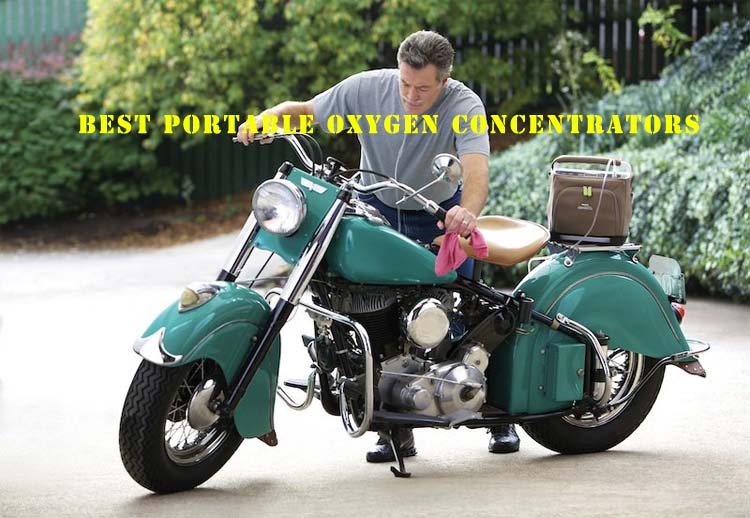
A portable oxygen concentrator (POC) is a carry-on device that can help people with lung diseases or sleep-related breathing disorders get proper oxygen saturation levels wherever they go. These devices deliver purified air right into the lungs via a face mask or a nasal cannula.
But how do you choose the right POC?
Well, that’s not too hard. What’s more, I can help you there!
Below, you’ll find a thorough guide and my reviews of the two best portable oxygen concentrators that can meet any demand! So, scroll down and take a look!
[table id=141 responsive=collapse datatables_row_details=true datatables_row_details_columns=”A-G” /]
Our Reviews of Best Portable Oxygen Concentrators
Best for Versatility
Philips Respironics SimplyGo
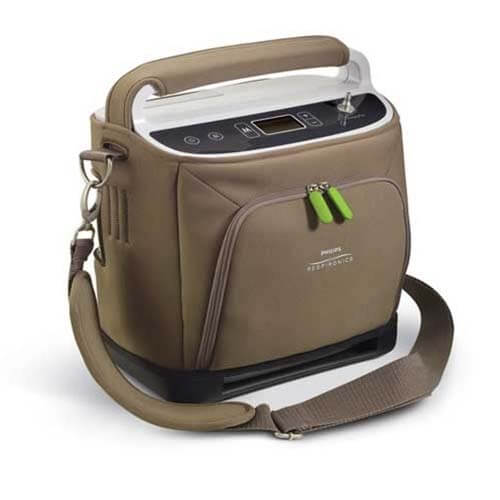
The Philips SimplyGo is on my list of the best portable oxygen concentrators because it has both pulse and continuous flow settings, so it can ensure oxygen delivery based on your needs.
The manufacturer tried to make the device as easy to use as possible. The SimplyGo has a lot of audio notifications for literally any situation. It alerts you about low battery and power outage. It also has alarms for no breath detection and impurities in oxygen.
Another key feature is adjustability. You can choose between six levels of pulse flow and adjust the continuous flow setting between 0.5 and 2 liters per minute. These precise settings allow adapting the device to literally any condition, which is a big plus.
Also, the SimplyGo has a built-in antibacterial filter that additionally disinfects the air. It should last a lifetime, according to the manufacturer’s info.
The thing I liked the most about this device is versatility. Both continuous and pulse flow are important for different health conditions. And the adjustable settings for each mode make the SimplyGo a universal device that can help literally anyone.
The main drawback for me is the weight. 10 lbs are not that much if you’re an average adult. For senior people, though, this may be uncomfortably heavy, so they might need a more compact option.
PROS
CONS
Overall, I think that the SimplyGo is a great device. It’s quiet, easy to use, and can be adjusted to any health condition for maximum benefits.
Best Travel-Friendly Pick
Philips Respironics SimplyGo Mini

Another option I’d like to present to you is the Philips SimplyGo Mini, which is basically a more compact version of the previous model. I think that this POC can be a great purchase for those who travel frequently or live an active lifestyle. This device weighs only 5 lbs and has a sleek design with a lot of useful features, which makes it one of the best portable oxygen concentrators on the market.
Now, the SimplyGo Mini comes with 5 levels of pulse flow settings you can adjust to your needs. The device delivers oxygen through a nasal cannula, and you can easily synchronize it with your breathing patterns for maximum comfort.
Also, this POC has a great battery life for such a device. With the standard battery, you can expect 4-4.5 hours of pulse flow delivery with medium settings. And if you use the extended battery, you can easily double that time — a great feature for long trips.
Also, the manufacturer includes a free carrying case for your device, which makes transportation a lot easier.
As you can see, the strongest point of this device is that it’s really travel-friendly. The SimplyGo Mini is compact and lightweight and can supply you with oxygen for long periods of time at one charge.
Speaking of the drawbacks, I would mention slight overheating during work, especially on the high levels of pulse flow. Even though it doesn’t affect the overall functionality, it’s still something to keep in mind.
PROS
CONS
With all of that being said, I can easily recommend the SimplyGo Mini for all the travel devotees or active people out there. It will be barely noticeable in your backpack or purse, still providing you with all the benefits of oxygen therapy.
What Is an Oxygen Concentrator and Who Needs it?
The air we breathe is nearly 78% nitrogen and 21% oxygen, with the remaining 1% being argon, helium, hydrogen, and other gases.
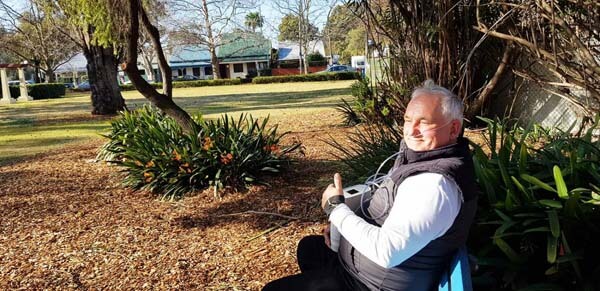 Now, we don’t develop hypoxia from breathing in this cocktail, and our lungs easily extract the oxygen from the air and deliver it to the organs and tissues by red blood cells.
Now, we don’t develop hypoxia from breathing in this cocktail, and our lungs easily extract the oxygen from the air and deliver it to the organs and tissues by red blood cells.
However, things may change as you age or if you have a medical condition, such as:
- Asthma. Asthma is an allergy-like disease that can cause inflammation in the lungs. Symptoms like coughing, wheezing, and chest spasms are common for asthma attacks, and people are usually prescribed with myorelaxant aerosols to cope with them fast.
- Bronchitis. Bronchitis is basically the inflammation process inside your airways. Inflammation leads to the swelling and mucus buildup and makes the airways narrower, thereby causing difficulties with breathing.
- Chronic obstructive pulmonary disease (COPD). This progressive condition causes the airways to narrow and hinders proper oxygen absorption. The most common causes of COPD include smoking and chronic bronchitis.
- Obstructive sleep apnea (OSA). Obstructive sleep apnea is a breathing disorder characterized by the temporary loss of breath during sleep (apnea episodes). This happens because the upper airways become blocked with soft tissues of the palate or a relaxed tongue. People with severe OSA can experience up to 100 apnea episodes during one night, which not only leads to disrupted sleep but also is one of the major risk factors for a heart attack or stroke.
Some of these conditions are irreversible and may worsen over time. But continuous oxygen therapy may help a person cope with the symptoms and live an active life.
Types of Portable Oxygen Concentrators
All modern POCs on the market can be divided into two major groups:
- Continuous flow POCs. These oxygen concentrators deliver a continuous flow of oxygen measured in liters per minute. They can be used as an emergency option to treat severe hypoxia.
- Intermittent flow POCs (Pulse flow). These are more adjustable and can be set to mimic your breathing patterns for more comfortable use. Also, pulse flow concentrators only provide oxygen during inhalation, which makes them less wasteful.
“Some models combine both continuous and pulse flow, which makes them more versatile. Note, though, that continuous airflow causes the battery to run out of energy faster. So, you might want to purchase a device with an extended battery that will last longer.”
POC and CPAP Therapy: Differences and Similarities
If you have sleep apnea, your physician will likely prescribe you a CPAP device for the therapy. This device delivers pressurized air in a steady stream that keeps your airways open and prevents their collapse.
Looks pretty similar to an oxygen concentrator, right? 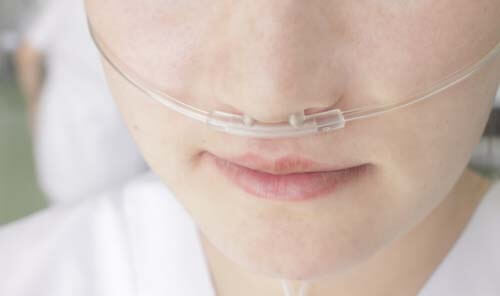
So why not use this device instead of a bulky CPAP mask that can limit your motion through the night and leave red marks on your face?
Well, even though both portable OC and portable CPAP machines deliver air into your airways, this is the only similarity they share.
And here are the key differences:
- The type of air. Oxygen concentrators deliver purified air enriched in oxygen to prevent hypoxia, which can lead to such conditions as heart failure or stroke. CPAP, BiPAP, and other sleep apnea therapy devices do not remove nitrogen from the air and just create a continuous airflow to prevent obstructions. Some devices have a built-in humidifier, though, for more comfortable use.
- Pressure settings. Both OC and CPAP machines allow you to adjust the pressure depending on your needs. However, since OCs mostly utilize nasal air delivery, their pressure settings will still be lower to prevent any discomfort.
However, if an individual with sleep apnea has a chronic respiratory disease that can cause low oxygen saturation, then he or she may be prescribed to use both an oxygen concentrator and a CPAP machine simultaneously.
Benefits and Drawbacks of Portable Oxygen Concentrators
A good portable oxygen concentrator can improve your life. Here are the main benefits you will get by using it:
- Compact design. The first and most obvious benefit of a POC is that it’s compact and easy to carry around, which is a huge plus for those who travel often or want to preserve their active lifestyle while undergoing therapy.
- Better sleep quality. When the oxygen level in the blood drops below a certain point during your sleep, your brain signals the body to wake up. This leads to sleep disruptions and has many adverse effects on your health. A POC will support stable oxygen levels, thereby promoting deeper and less interrupted shut-eye.
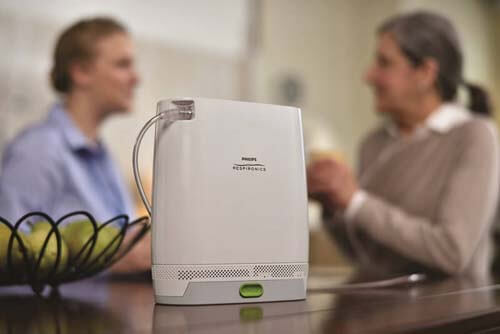
- Improved mood and performance. Deeper sleep induced by the oxygen therapy will positively impact your cognition, performance, and emotional regulation, meaning you’ll actually feel better in the long term.
- Lower risk of cardiovascular diseases. Heart and brain suffer from hypoxia the most, and improving oxygen levels can reduce the risks of heart failure, arrhythmia, or stroke.
However, anything comes with drawbacks. In the case of using portable oxygen concentrators, they might be the following:
- Long charging time. Although some portable devices can last really long on a single charge, they also may take quite a lot of time to recharge fully.
- Risk of oxygen intoxication. High doses of oxygen can cause oxygen poisoning. The common symptoms of this condition include dizziness, headache, nausea, and muscle weakness. So, adjusting the level of the oxygen on your device without consulting your physician first is highly not recommended.
- Possible nasal dryness. POCs don’t have a humidifier, so they deliver dry air right into your upper airways. This can make mucous membranes too dry and turn them into an easy target for viruses and germs.
“Don’t forget that oxygen is a highly flammable and combustible gas. Keep your POC away from a direct heat source and don’t allow anyone to smoke while you’re using it.”
How to Choose the Best Portable Oxygen Concentrator?
Good portable oxygen concentrators can vary in prices between $2,000 for a starter model and $4,000 or more for a high-end device.
Since this is a pretty big amount of money, you need to be sure that you choose a perfect POC that will meet your demands and will be worth every cent.
So, here is the list of things you should consider:
- Battery life. A good average point of the battery life is about 1.5-2 hours on the continuous flow and up to 9 hours on the pulse flow if we speak about lower settings. Note that the higher the settings are, the faster your battery will drain. So, you might want to choose the devices with double batteries that will last longer.
- Oxygen purity. The higher the purity level — some models can offer you up to 95% of oxygen — the lower settings you will need to use to get proper oxygen saturation. Most of the POCs can give you the oxygen purity above 90%.
- Noise level. Some of the POCs can be really noisy and mess with your sleep if you use them during the night. An average noise level for most concentrators, though, tends to fall between 43 and 46 decibels, which is slightly louder than a whisper, so it shouldn’t be a problem.
- Altitude. This factor is required for FAA-approved portable concentrators, as it allows you to determine whether your device is suitable for this particular flight or not. Most of the portable oxygen concentrators can be transported up to 14,000 feet high, but you should check with the airline whether they actually allow oxygen concentrators on board.
Final Word
Oxygen therapy is the most effective way for seniors and people with chronic pulmonary diseases to live a normal life. And choosing the right POC device is the key step for that.
I can recommend the Philips SimplyGo for individuals who need an effective device with maximum customization. You can vary the flow settings and switch between pulse and continuous flow within seconds. Also, the device will alert you if the battery is low or if it detects the shortage or pauses in your breathing patterns.
At the same time, the SimplyGo Mini would be a great pick for those who travel often and need a device with a long-lasting battery for their trips. This small and quiet POC won’t take too much space in your luggage. Also, it charges pretty fast, so you’ll be ready for exploring new destinations in no time.
What model out of these two seems more applicable to your needs? Share your feedback below!
Product links on Happysleepyhead are referral. We get a commission on purchases made through our links at no additional cost to you. More information in my disclosures.



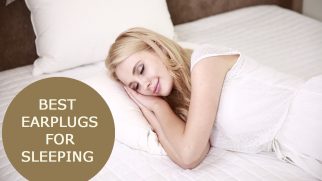
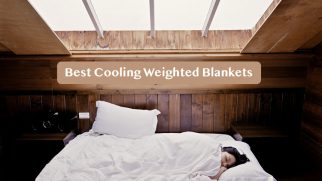
No Comments